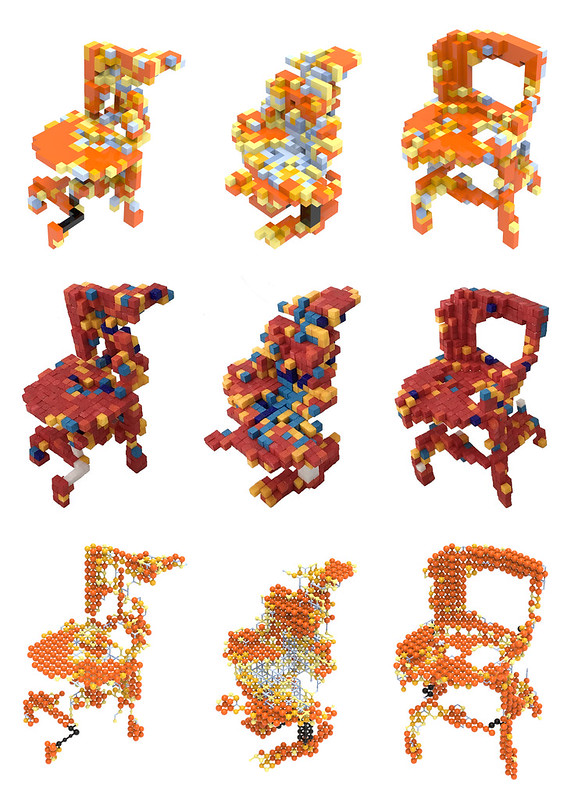The Discrete 3D-GAN-Chairs…Architecture (2020) project is an exploration of architectural interiority and exteriority using 3D generative adversarial networks (GANs) to produce spatial and formal prompts for creative computational 3D designs across scales and domains. In recent years, with the readily available dataset of natural images and the relative ease of preparing curated datasets of 2D designs, many designers have begun to experiment with GANs in producing novel and inspirational-looking 2D imagery. While some designers have tried to intuitively interpret them as 3D forms indirectly, the project argues that a direct computational translation from 3D-GAN generated forms to 3D physical artefacts suggests significant design potential for complex spatial ideation and integrated digital fabrication.
The first dataset consists of ten thousands existing voxel models of chairs from ShapeNet, while the other contains about 4000 self-created voxel models of residential building blocks. Three different latent spaces (i.e. chairs, buildings and chair-with-buildings) are used for the sampling and interpolations. The contrast in scale between chairs and buildings is deliberate in order to show that 3D visual prompts need not be domain specific and could even be interpolated given a shared latent space. Thus, similar to visual analogy in creative design studies, the formal and spatial analogical characteristics of 3D designs from one domain might well be inspirational for another.
Using a GAN trained with a chair dataset as an illustration, the presence or absence of a voxel-in-position is a reflection of the voxel’s contribution towards the GAN’s perception of ‘chair-ness’, regardless of the voxel’s contribution towards the structural stability of the generated chair. This is in fact a break from the current industry obsession in CAD/CAM generative design where structural optimization and material minimization have become the sole pseudo-legitimate drivers of form-finding. In this project, instead of simply taking the output of a voxel as a boolean value (0 or 1), it is mapped to a discrete set of interconnecting joints and visualized according to a corresponding set of colours. Exceptionally, the black colour is used to represent any human intervention in editing the original GAN-generated 3D forms. The digital voxels are first assembled manually as physical voxels to aid formal understanding (and sometimes structural editing) during the tacit hands-on design exploration stage. This is followed by a computational translation, using the probability distribution of each voxel to geometrically articulate the initial digital design massing as a locally differentiated scaled physical 3D-printed artefact.


